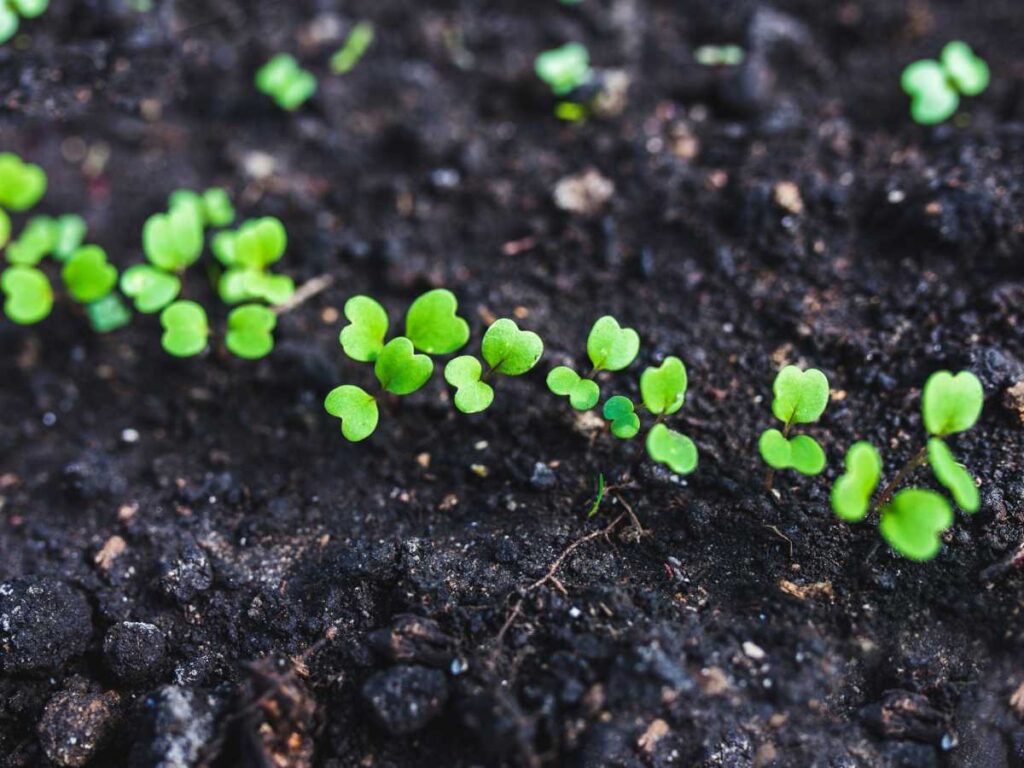Arugula plants belong to the cabbage family, along with kale, broccoli, cauliflower, mustard, and several other dark green leafy vegetables. Arugula plants are one of the green vegetables rich in nutrients and vitamins that are good for human health. This plant is super easy to grow and care for with seeds at home. In particular, Arugula plants can grow in many environments and climates due to their ability to adapt to all circumstances.
You can grow Arugula plants from seeds or seedlings. However, growing this vegetable from seeds will bring many benefits and save more money than growing vegetables from seedlings. How to grow arugula from seeds? Join us to learn the steps to grow Arugula from seeds and important notes in the process of caring for and harvesting this vegetable.
How To Grow Arugula From Seed: Important Notes
To grow arugula from seed, you need to prepare good quality seeds, a tray of soil, or a Styrofoam box to sow the seeds. Then, you fertilize and water to maintain moisture until the seeds begin to germinate.
Whether the seed germination process is favorable or not depends on the temperature and the area where you sow the seeds. Arugula plants can grow in many different conditions and climates. However, they also cannot withstand temperatures that are too hot or too cold. If you live in a hot climate, wait until temperatures are below 90 degrees F to start seeds. If your area has a colder climate, you should sow Arugula seeds before the last frost date.
Arugula seeds look similar to kale seeds, so they are very small. Before sowing seeds, you should improve the soil, keep it moist, and fertilize it to increase nutrients in the soil. You can sow Arugula seeds in Styrofoam containers or garden beds. You should take a few seeds at a time and spread them evenly throughout the Styrofoam box or vegetable bed to avoid too high a density of seeds. Note that you do not need to bury too much soil on the seeds because they only need to be in contact with the soil to germinate.

Additionally, if you don’t want to have to prune young plants when they get too thick, you should plant the seeds about 4 inches apart and staggered in rows. During this process, you need to water and keep the soil and seeds at an ideal moisture level. Normally, the seeds will germinate 6 to 10 days after you sow them.
When the seeds first germinate, the stems and first leaves of Arugula are very fragile so you need to protect them from heavy rain, strong winds, or snow. Because they are easy to break, die, or develop slowly in the next stages.
During the growth of young plants, you can add fertilizer with a high nitrogen content to stimulate the growth of the first leaves. To ensure young plants grow and have the best flavor, you should water them 1-2 inches per week. Because Arugula leaves will be too spicy and not delicious if they are dehydrated. Therefore, you should regularly check the moisture in the soil and water when the soil surface is dry. Concentrate on watering their roots instead of watering the leaves of Arugula.
How To Care For And Harvest Arugula From Seeds
Arugula can be attacked by cabbage worms and other insects. When you discover young trees attacked by pests, remove them to avoid spreading them to other trees. If cabbage worms infest Arugula in a large space, you should use soap or neem oil to kill them.
Normally if you grow green vegetables such as cabbage, cauliflower, or broccoli, you will have to wait a relatively long time to harvest. However, the time to harvest Arugula will be much shorter. You can start harvesting the first Arugula leaves from 30 to 45 days. Arugula harvest time will depend on the size of the first leaves. The flavor of the first leaves will be at their best when they reach a height of 3-4 inches.
You can harvest Arugula in batches or harvest individual leaves at the bottom to extend harvest time. If you harvest in batches by pruning 1/3 of the leaves of each plant at a time, you can extend the harvest time up to 10 times before the vegetable has flowered. You will always enjoy the best-tasting leaves for a longer period.
In addition, when Arugula matures and flowers, its leaves will become more bitter or spicy. You can still harvest Arugula leaves during this period, but their flavor is no longer perfect. Therefore, you can harvest Arugula leaves in large quantities last to avoid the leaves losing their delicious flavor. You can store Arugula leaves in the refrigerator, puree them and store them in the freezer to prolong their shelf life.
If you don’t harvest the Arugula seeds, you can pull them out and amend the soil for the next seed. If you want to harvest seeds, you need to wait for the plants to flower and produce seeds. Seeds need to be dried and carefully selected to prepare for the next sowing.
Conclude
Arugula plants are nutritious green vegetables and are popular in many delicious salads. You should grow this vegetable from seeds because it will help you save costs when growing from seedlings. In particular, Arugula seeds are easy to grow and germinate, so you can sow and harvest many vegetables in a year.
The seeds of Arugula are very small, so you need to spread them evenly everywhere instead of in a small space. In the early stages, you should water regularly with 1-2 inches of water per week to keep the seeds and soil moist. The first sprouts and leaves will appear after 6-10 days if they receive enough moisture. So, you just need to wait a few more days to enjoy the first delicious Arugula leaves.